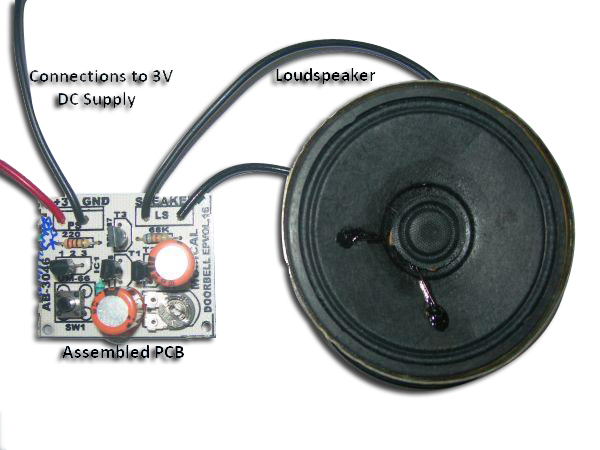UAE Shops - Established in 2002
عربى
Musical Door Bell with Memory
At the heart of the Musical Doorbell lies the melody generator IC BT66T (or UM66). The circuit employs a small timer mechanism to produce the musical tune for a specific interval of time. This timer uses discrete components such as the transistors T1 and T2, resistor R1, preset VR1 and capacitor C1 to control the time for which power is applied to the IC. The underlying mechanism is very simple, when the push-to-on switch is pressed, capacitor C1 charges to +V cc. This causes a positive voltage to be applied to the base of transistor T1 through resistor R1. Consequently, T1 becomes forward biased and conducts. Since the emitter of T1 is connected to the base of T2, transistor T2 also begins to conduct. Collector pin of both of these NPN transistors (T1, T2) is connected to pin3 of the melody generator IC. This junction becomes virtually ground and a potential difference develops between pin2 and 3 of the BT66T IC. As a result, capacitor C2 charges up to the supply voltage. This activates the melody generator IC to produce musical tunes at its output pin in the form of a varying electrical signal. The resistor R2 limits the current of these variations while transistor BEL187 (or BC547) receives these variations at its base and then amplifies them in order to feed them to the loudspeaker. The loudspeaker converts these amplified electrical variations into audible sound, thereby generating the melodious musical tone. Brand: Kits'n'spares, Marketed by: Kits'n'spares Application of the melody generator IC BT66 (or UM66). Application of NPN transistors for switching purposes.



